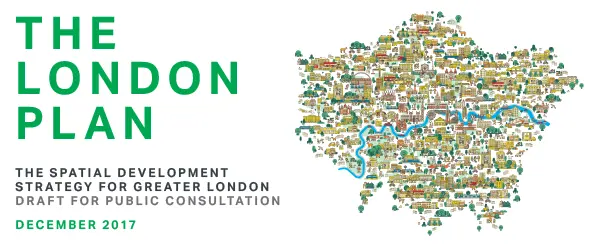Here we provide a bite-sized review of the draft London Plan’s ‘heritage conservation and growth’ policy (HC1) which will guide future heritage planning in the capital.
The strategic aim of the current London Plan (in Policy 7.8, Heritage assets and archaeology and Policy 7.9, Heritage-led regeneration) is the identification of heritage assets and the historic environment, so that ‘the desirability of sustaining and enhancing their significance and of utilising their positive role in place shaping can be taken into account’.
The supporting text emphasises the need to preserve London’s unique character through the protection and adaptive reuse of heritage assets and their settings (para. 7.31). Paragraph 7.31B goes on to state that when considering re-use or refurbishment:‘…a balanced approach should be taken, weighing the extent of the mitigation of climate change involved against potential harm to the heritage asset or its setting’.
Given that London has four World Heritage Sites, over 1,000 conservation areas, almost 19,000 listed buildings, over 150 registered parks and gardens, and more than 150 scheduled monuments - plus one battlefield in Barnet - many development projects will affect the historic environment in one way or another. This list of all of the capital’s heritage assets is set out in the supporting text of both the current and the draft London Plan.
The new draft Plan’s policy HC1 Heritage Conservation and Growth would replace existing policies 7.8 and 7.9. The strategic thrust of the new draft policy remains similar to current policy. It states that the London Boroughs’ plans and strategies should demonstrate a clear understanding of the historic environment; councils should then use this knowledge ‘to inform the effective integration of London’s heritage in regenerative change’, by ‘setting out a clear vision’ that recognises and embeds the role of heritage in place-making. Draft policy HC1 is however more detailed, lengthier and – at times – unnecessarily repetitive. In terms of one aspect, it represents an important shift in approach: HC1 indicates that ‘innovative and creative contextual architectural responses’ should be devised at plan making stages in Borough strategies but fails to explain exactly how.
The draft policy raises the following considerations:
- Development plans and strategies integrating heritage assets and their settings in regenerative change through ‘innovative and creative contextual architectural responses’, in a way that contributes to their significance and sense of place, could be seen as ‘a good thing’ by prospective applicants seeking to respond to context through conserving significance and appreciating setting in the design process;
- According to the draft policy, the cumulative impacts of incremental development should be ‘actively managed’. This generally already occurs anyway, through gaining an understanding of how the significance and/ or setting of an asset can be affected by development (taking into account existing/recent effects and committed development too); and
- Heritage considerations are encouraged to be ‘integrated’ at an early stage - since the publication of the National Planning Policy Framework (NPPF) and the requirement for a ‘Statement of Significance’ to be submitted with planning applications this has also usually, but not always, happened.
In short, development should identify, value, conserve, restore, re-use and incorporate heritage assets, where appropriate.
The requirement for boroughs to give undesignated heritage assets of archaeological interest equivalent weight as to a scheduled monument (i.e. as a designated heritage asset) is consistent with the NPPF (para. 139). However, the draft Plan’s supporting text does not always reflect key NPPF policy; for example, substantial harm should be exceptional and less than substantial harm should be weighed against the public benefits of the proposal (NPPF paragraphs 132 and 134). While most of the draft Plan is consistent with the NPPF, this point illustrates how certain elements are not.
In summary, additional detail has been added in to the draft London Plan that has resulted in a less streamlined and less concise draft heritage policy, without necessarily adding a great deal to the core principles set out in statute and national policy. While the draft Plan introduces caveats to avoid unnecessary repetition of national policies (para 0.0.6), a more explicit reference to how the NPPF (i.e. paras 132 and 134) can be implemented in London, in tandem with the Plan, would be of significant benefit to working professionals.
The Mayor’s vision very much encompasses the idea that London’s heritage assets should contribute to ‘Good Growth’. Unlike the current Plan, this is one of the two new ‘pillars’ of the draft London Plan. However, the draft heritage policy is written in a less easily digestible form than the current London Plan’s policies. This may be addressed through the consultation process and before publication of the final document, to ensure this valuable heritage policy remains a robust method of protecting and conserving London’s historic environment.
For advice on developments which affect the historic environment please contact the Lichfields’ Heritage Team.
Further Lichfields’ analysis of the draft London Plan and its implications can be found
here.



